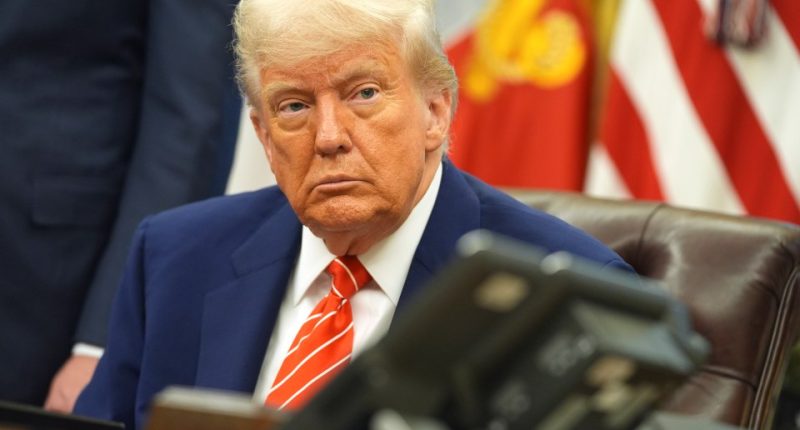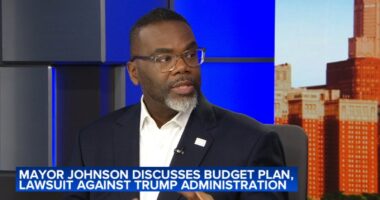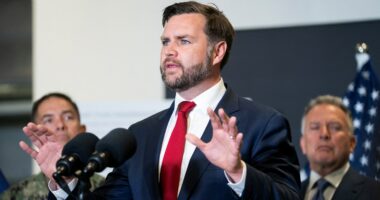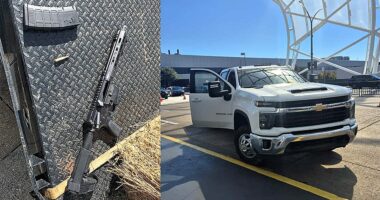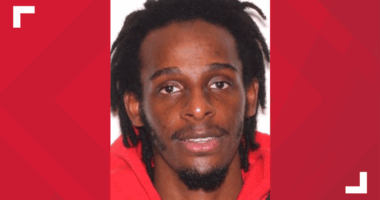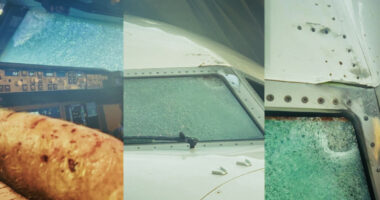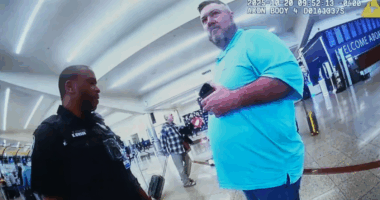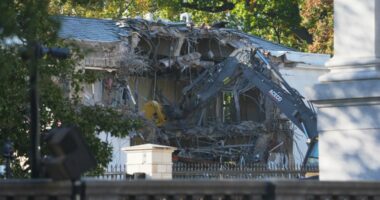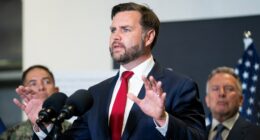Share this @internewscast.com
VLADIMIR Putin has warned Donald Trump he “will have to respond” to Ukraine’s daring drone strike on Russian airfields, the US president revealed.
In a striking post on Truth Social, Trump shared that the Russian leader issued a warning during their 75-minute phone conversation, where they discussed escalating tensions in Ukraine and Iran’s nuclear goals.
“It was a good conversation, but not a conversation that will lead to immediate Peace,” Trump wrote.
“President Putin did say, and very strongly, that he will have to respond to the recent attack on the airfields.”
The discussion, verified by the Kremlin, followed Operation Spiderweb—a bold Ukrainian drone attack that destroyed 41 Russian planes at four key airfields, an assault reminiscent of the boldest missions of WWII.
Recently published footage from Ukraine displays drones one after another descending onto Putin’s nuclear bomber fleet, transforming these aircraft into blazing ruins.
In one dramatic clip, a drone hones in on a bomber while another lies burning nearby. In another, a row of bombers blazes along the runway.
Ukraine’s intelligence service, the SBU, deployed 117 kamikaze drones, each with its own pilot, targeting the Olenya, Belaya, Dyagilevo, and Ivanovo-Severny air bases — deep inside Russian territory.
The swarm of drones was launched from shipping containers hidden in plain sight, with Russian lorry drivers unknowingly parking them next to military bases.
As civilians watched in disbelief, the containers cracked open and unleashed the aerial assault.
Ukraine said the cost to the Kremlin could reach $7 billion (£5.4bn), wiping out a major chunk of its long-range aviation fleet, including Tu-95MS and Tu-22M bombers and A-50 spy planes.
Ukraine’s President Volodymyr Zelensky confirmed he personally authorised the operation 18 months ago, declaring: “It’s genuinely satisfying when something I authorized a year and six months ago comes to fruition and deprives Russians of over forty units of strategic aviation. We will continue this work.”
Despite the humiliation, Putin didn’t mention the strikes in his first public appearance after the attack — instead accusing Ukraine of being “terrorists” and citing civilian deaths in rail network strikes.
His negotiators even issued fresh ceasefire terms demanding Ukraine surrender territory, limit its army, and recognise Crimea as Russian.
But Putin’s threats don’t stop with Ukraine.
In the same call with Trump, he discussed Iran’s nuclear programme and growing tensions in the region.
“I stated to President Putin that Iran cannot have a nuclear weapon and, on this, I believe that we were in agreement,” Trump wrote.
“President Putin suggested that he will participate in the discussions with Iran and that he could, perhaps, be helpful in getting this brought to a rapid conclusion.”
Meanwhile, fears of a broader war are exploding across Eastern Europe, as Russia reportedly plans to deploy 10,000 troops into Moldova’s breakaway region of Transnistria — potentially opening a new front on Ukraine’s southwestern border.
Moldova’s pro-EU Prime Minister Dorin Recean warned: “They want to consolidate their military presence in the Transnistrian region.”
“Currently, their forces there are almost meaningless. But with a higher military presence in Transnistria that a Russia-leaning government can allow for, they can consolidate.”
Recean claimed Russia is meddling in Moldova’s September elections, spending the equivalent of 1% of the country’s GDP on influence campaigns to help install a more Kremlin-friendly government.
Transnistria’s leader Vadim Krasnoselsky has issued a stark warning of his own: “A war in Transnistria would mean a direct conflict between Russia and NATO. I don’t have the slightest doubt about it.”
